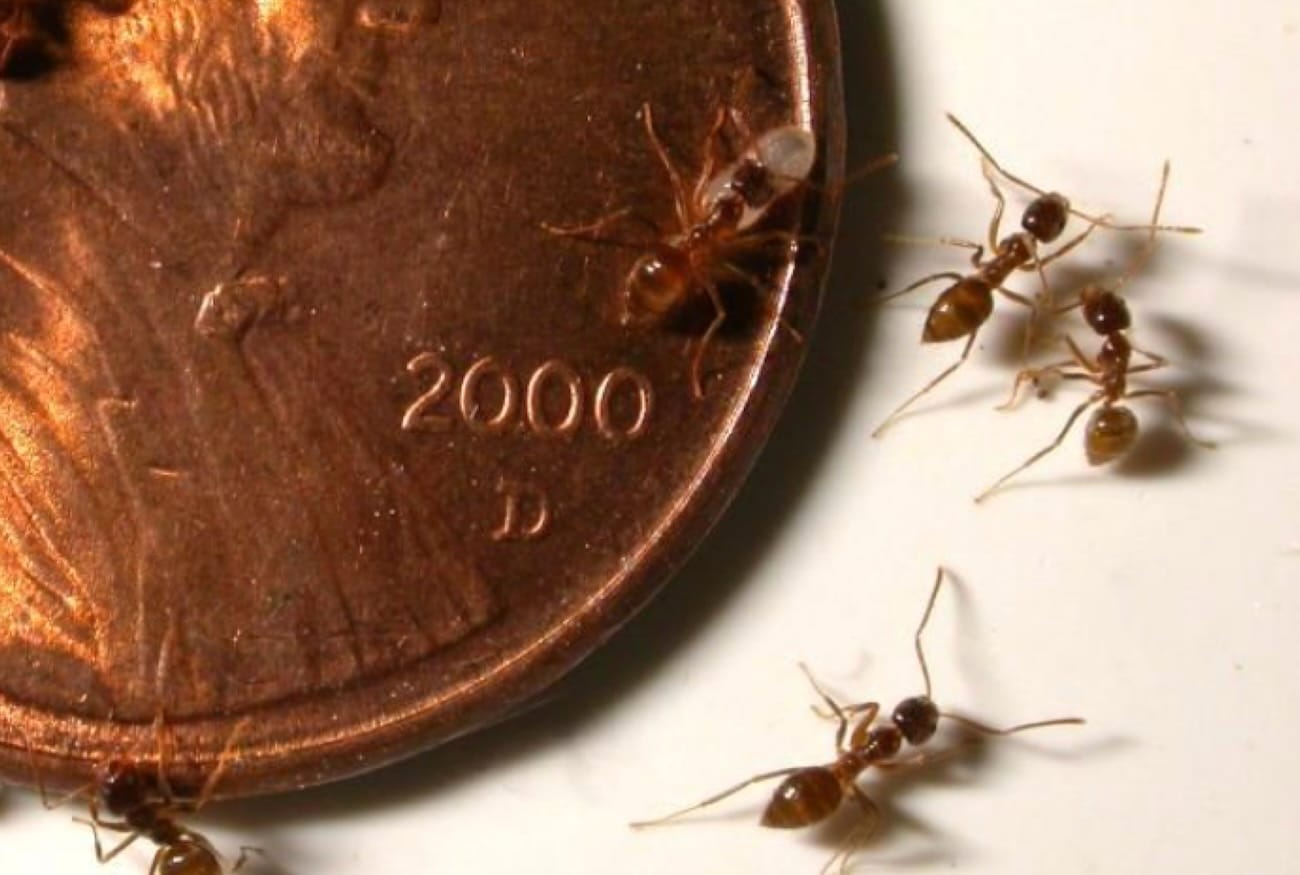These 'Crazy' Invasive Florida Pests Attack Mammals, Birds and Create Giant Supercolonies
According to Texas A&M University's Urban and Structural Entomology Program, after experiencing the tawny crazy ant, most residents prefer the fire ant.

Move over Burmese pythons and iguanas. This Florida invasive species numbers in the millions, asphyxiates its prey and creates huge supercolonies that are nearly impossible to eradicate. Meet tawny crazy ants.
NOTE: this article was originally published to Hearld Tribune's Apple News channel on July 10, 2025. It was written by Kim Luciani.
They get their name from their erratic movements, especially while foraging, and are native to South America but spread to the southern U.S. in the late 1990s.
According to the USDA, tawny crazy ants in Florida are part of a super colony that spreads across the southern U.S. They lack territorial behavior, which enables the creation of gigantic supercolonies, whose need for resources drives out local wildlife and brings them into direct conflict with humans.
They can invade homes where they are drawn to and damage electrical equipment, and can make yards uncomfortable for residents to enjoy.
In areas of the country with severe tawny crazy ant infestations, they kill or displace local wildlife, including other ant species, even fire ants. “There’s no insect noise and there’s no bird noise,” University of Texas ecologist Edward LeBrun told Science.
According to Texas A&M University's Urban and Structural Entomology Program, after experiencing the tawny crazy ant, most residents prefer the fire ant.
Tawny crazy ants bite and excrete formic acid
Tawny crazy ants bite and excrete formic acid, which they use like venom.
What do tawny crazy ants in Florida eat?
According to the University of Florida's Institute of Food and Agricultural Sciences (IFAS), tawny crazy ants prey on live animals, and scavenge from dead animals. They eat caterpillars, beetles, termites, wasps and spiders, or even small animals such as rabbits, birds, lizards, and domestic animals, which usually die due to asphyxia.
Tawny crazy ants are capable of forcing birds from their nests and blinding young rabbits with their acid,
Smithsonian Magazine reported.
They can attack crops, domestic animals and honeybee hives, and take over the nesting sites of other ant species, including fire ants.
Where in Florida are tawny crazy ants found? See map
According to IFAS, by 2012, tawny crazy ants were found in 24 counties in Florida listed below, with infestations spreading. This can be expected in any county in Florida, IFAS
What do tawny crazy ants look like?
The Urban and Structural Entomology Program at Texas A&M University describes tawny crazy ants as fol-lows:
- Coloration: Adult colony members, including queens, males and workers, are reddish-brown (although lightness or darkness of their body color may vary)
- Size: Worker ants are all similar in size (they are monomorphic), with a body length of 1/8 inch.
- Worker ants have long legs and antennae and their bodies have numerous, long, coarse hairs. The antenna have 12-segments with no club.
- There is a small circle of hairs (acidopore) present at tip of the abdomen (as opposed to the typical stinger found in many ants), a characteristic of formicine ants (found within the Formicinae subfamily).
How to get rid of tawny crazy ants around your home
Management of this ant will most likely require the services of a professional pest control company that practices integrated pest management (IPM).
According to UF, 100% eradication of this ant is not probable in areas where it is established. However, population suppression is possible.
Tawny crazy ant prevention
Outdoors
Schedule regular trash pick-up. Keep trash cans clean and stored away from the home.
Remove leaf litter, fallen branches, and other yard debris.
Keep hedges and trees trimmed so that they do not touch the home.
Indoors
- Eliminate or reduce possible food, water, and nesting sources.
- Remove trash regularly and keep trash receptacles clean.
- Do not leave dirty dishes in the sink.
- Clean up spills immediately.
- Place food items in the refrigerator or in sealed containers.
- Pick up pet food bowls when your pet is not eating.
Exclusion
To prevent ants from entering a home:
- Walk around the outside of the home and locate potential entry points (cracks, crevices, spaces around windows and doors).
- Locate indoor entry points, paying particular attention to windows, doors, and plumbing and utility penetrations.
- Use an appropriate sealant.
- Replace door thresholds and weather stripping as needed.
- If you can see light from the outside while you are standing inside, it is enough of a gap for ants and other pests to enter.
